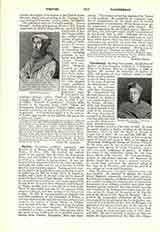

Tartini, GIUSEPPE, violinist, composer, and theorist, b. at Pirano, Italy, April 12, 1692; d. at Padua, February 16, 1770. He resisted the earnest desire of his parents that he enter the Franciscan Order, and matriculated at the University of Padua in 1710 as a student in jurisprudence. It was not long before he abandoned this for the study of music, especially the violin, and the art of fencing, in which latter he soon became a master. Having secretly married a relative of Cardinal Cornaro, and being accused of abduction, he fled to Assisi, where he found an asylum and a guide of the first order for his musical studies in the person of Padre Boemo. After two years he emerged from his seclusion—the charge against him having in the meantime been dropped—and returned to Padua, settling later in Ancona for several years. There he developed into one of the greatest violin players of all time, and also continued his theoretical studies. In 1721 he was appointed solo violinist and orchestra conductor at the Cathedral of Padua, a position which he held, with the exception of two years spent in the service of Count Kinsky at Prague, until the end of his life. He refused many flattering invitations to visit other countries. In 1728 Tartini established at Padua a school for violin-playing which has given to the world some of its greatest masters, among them Nardini, Pasqualino, Bini, and many others. The manner of bowing originated by Tartini is still standard. He published an enormous number of compositions for the violin and for several combinations of instruments. Of the former many are the repertoires of present-day violin virtuosi. His single composition for the Church was a “Miserere” for four, five, and eight voices, which was performed by the Sistine choir in 1768. Although not the first to discover the so-called combination tone, or third tone, which results when two tones forming a perfect consonance are sounded, his name has always been associated with this discovery because he made it the basis of a new system of harmony. This system he laid down in his “Trattato di musica” in 1754.
JOSEPH OTTEN

